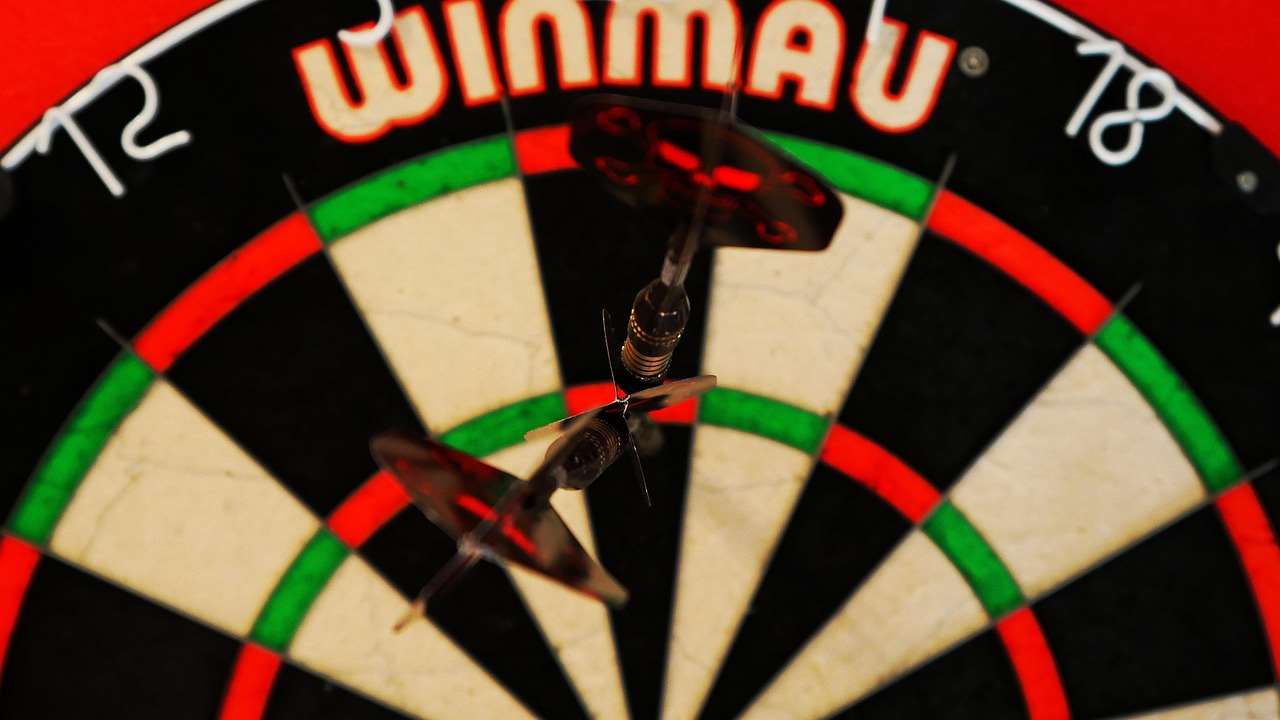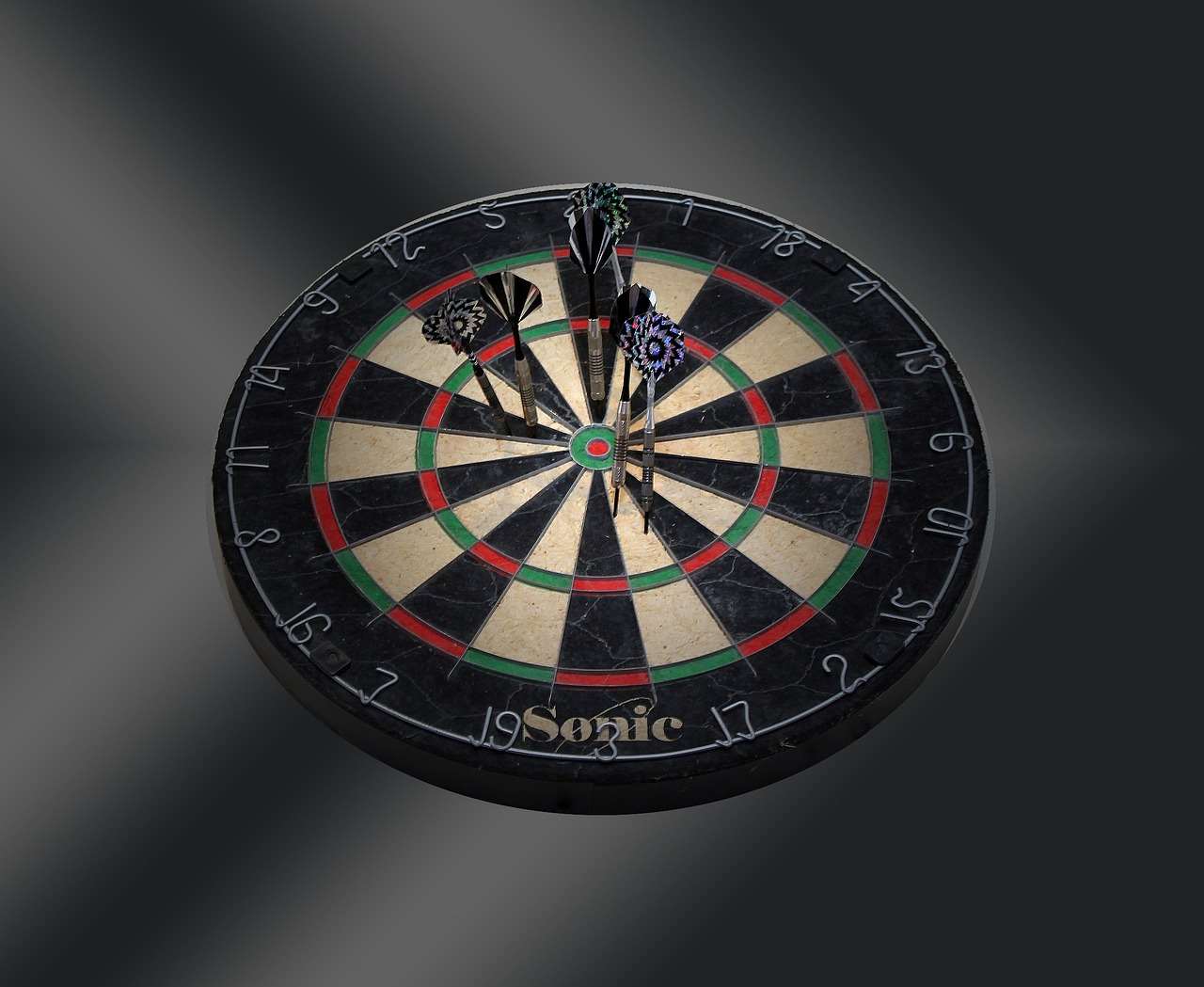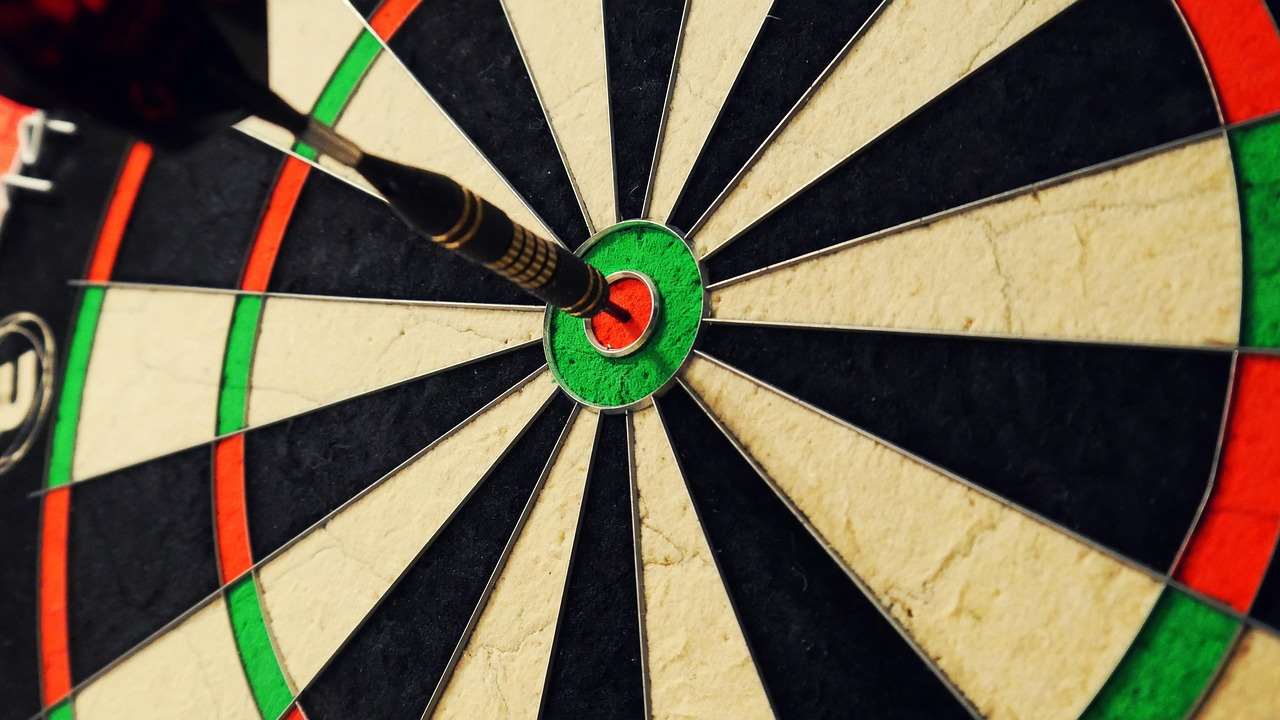Setting up your **electronic dartboard** for hours of fun is easier than you think! This Electronic Dartboard Setup Guide will walk you through everything, from mounting and powering your board to understanding the rules and getting ready to play. You’ll also learn about troubleshooting common issues and maximizing your playing experience.
⚠️ Still Using Pen & Paper (or a Chalkboard)?! ⚠️
Step into the future! The Dart Counter App handles all the scoring, suggests checkouts, and tracks your stats automatically. It's easier than you think!
Try the Smart Dart Counter App FREE!Ready for an upgrade? Click above!
Essential Steps for a Smooth Electronic Dartboard Setup
Getting your electronic dartboard ready for action involves a few key steps. From selecting the perfect location to understanding the board’s features, following these instructions carefully will ensure a smooth and enjoyable setup process. Let’s dive in and get you throwing darts in no time!
Choosing the Right Location
The first step is to choose a suitable location for your dartboard. Consider these factors:
- Space: You’ll need enough clear space for players to stand and throw darts safely. A minimum of 8-10 feet of unobstructed space from the board is recommended.
- Lighting: Good lighting is crucial. Ensure the area is well-lit to avoid shadows on the board, which can make it difficult to aim accurately. Consider adding a dedicated dartboard light if necessary.
- Wall Protection: Darts can occasionally miss the board, so protecting your wall is important. A dartboard surround, made of cork or rubber, is a great investment.
- Floor Protection: Similarly, protecting your floor from stray darts is wise. A dart mat will not only protect your floor but also provide a consistent throwing distance marker.
- Proximity to Power Outlet: Electronic dartboards require a power source. Choose a location near a power outlet or use an extension cord safely.

Mounting Your Electronic Dartboard Securely
Proper mounting is critical for safety and optimal gameplay. Follow these steps:
- Measure and Mark: The standard height for the center of the bullseye is 5 feet 8 inches (1.73 meters) from the floor. Use a measuring tape and a level to mark this point on the wall.
- Attach the Mounting Bracket: Most electronic dartboards come with a mounting bracket. Align the bracket with the marked point on the wall and use a pencil to mark the screw holes.
- Pre-Drill Holes: Use a drill to pre-drill holes at the marked locations. If you’re mounting on drywall, use wall anchors for added stability.
- Secure the Bracket: Attach the mounting bracket to the wall using screws. Ensure it is securely fastened.
- Hang the Dartboard: Carefully hang the dartboard onto the mounting bracket. Make sure it is level and securely in place.
Always double-check the stability of the dartboard after mounting to prevent accidents.
Powering Up Your Board and Initial Setup
Once your dartboard is mounted, it’s time to power it up and complete the initial setup:
- Connect the Power Adapter: Plug the power adapter into the dartboard and then into a power outlet.
- Turn On the Dartboard: Most electronic dartboards have a power switch on the back or side. Turn it on.
- Initial Settings: The dartboard may prompt you to set the language, date, and time. Follow the on-screen instructions to configure these settings.
- Sound Settings: Adjust the volume to your desired level. You can usually find sound settings in the menu.
Understanding Electronic Dartboard Rules and Game Options
Electronic dartboards offer a variety of game options and scoring features. Familiarizing yourself with these will enhance your playing experience. When it comes to choosing the right darts for these games, remember you can Choose Best Dart Equipment based on your preference.
Exploring Popular Game Variations
Electronic dartboards typically come with several pre-programmed games, including:
- 301/501: Players start with a score of 301 or 501 and must reduce their score to exactly zero to win.
- Cricket: A strategic game where players must “close” numbers (20, 19, 18, 17, 16, 15, and bullseye) by hitting them three times before their opponent does.
- Around the Clock: Players must hit each number on the board in sequence, from 1 to 20.
- High Score: Players aim to score the highest possible score within a set number of rounds.

Understanding Scoring and Display Features
Electronic dartboards automatically calculate and display scores, making gameplay easier. Here are some key features:
- Automatic Scoring: The board automatically detects where the darts land and calculates the score.
- Digital Display: The score is displayed on a digital screen, making it easy to track progress.
- Player Tracking: The board can track scores for multiple players, allowing for team games.
- Average Score Calculation: Some boards calculate and display players’ average scores, providing a useful metric for improvement.
Troubleshooting Common Electronic Dartboard Issues
Even with careful setup, you might encounter some issues with your electronic dartboard. Here’s how to troubleshoot common problems.
Dart Not Registering
If a dart doesn’t register, try these solutions:
- Check the Dart Tip: Make sure the dart tip is not damaged or bent. Replace it if necessary.
- Clean the Dartboard Segments: Dust and debris can interfere with the sensors. Use a soft cloth to clean the segments.
- Adjust Segment Sensitivity: Some boards allow you to adjust the sensitivity of the segments. Check the user manual for instructions.
Dartboard Not Turning On
If the dartboard won’t turn on:
- Check the Power Connection: Ensure the power adapter is securely plugged into both the dartboard and the power outlet.
- Test the Power Outlet: Plug another device into the outlet to make sure it’s working.
- Replace the Power Adapter: If the outlet is working, the power adapter may be faulty. Try using a different adapter.

Segment Stuck or Not Scoring Correctly
If a segment is stuck or not scoring correctly:
- Check for Debris: Inspect the segment for any debris or foreign objects that might be interfering with its movement.
- Reset the Dartboard: Try resetting the dartboard by turning it off and on again.
- Contact Customer Support: If the problem persists, contact the manufacturer’s customer support for assistance.
Tips for Maximizing Your Electronic Dartboard Experience
To get the most out of your electronic dartboard, consider these tips:
Regular Maintenance and Cleaning
Keep your dartboard in top condition with regular maintenance:
- Clean the Segments: Regularly clean the dartboard segments with a soft cloth to remove dust and debris.
- Replace Dart Tips: Replace worn or damaged dart tips to ensure accurate scoring.
- Check Mounting Stability: Periodically check the mounting to ensure the dartboard is securely in place.
Upgrading Your Darts and Accessories
Consider upgrading your darts and accessories for improved performance:
- Invest in Quality Darts: High-quality darts can improve your accuracy and consistency. When thinking about Are Premium Darts Worth It, consider the improved grip and balance they offer.
- Use a Dartboard Surround: A dartboard surround protects your wall from stray darts.
- Add a Dart Mat: A dart mat protects your floor and provides a consistent throwing distance.

Practicing and Improving Your Dart Game
Consistent practice is key to improving your dart game:
- Practice Regularly: Set aside time each week to practice your throwing technique.
- Focus on Consistency: Work on developing a consistent throwing motion.
- Track Your Progress: Use the dartboard’s scoring features to track your progress and identify areas for improvement.
Advanced Electronic Dartboard Features and Connectivity
Some advanced electronic dartboards offer features like Bluetooth connectivity and online play. These features can significantly enhance your playing experience and allow you to compete with players from around the world.
Bluetooth Connectivity and App Integration
Bluetooth-enabled dartboards can connect to your smartphone or tablet, allowing you to:
- Track Your Stats: Use a companion app to track your scores, averages, and other statistics.
- Play Online: Compete against other players online through the app.
- Access Training Programs: Some apps offer training programs to help you improve your dart game.

Online Play and Tournaments
Participating in online play and tournaments can add a new level of excitement to your dart game:
- Compete Against Players Worldwide: Connect with other players from around the world and test your skills.
- Join Online Leagues: Participate in online leagues and track your progress over time.
- Enter Tournaments: Compete in online tournaments for prizes and recognition.
By understanding your equipment and following these practices, you’ll be well on your way to achieving a better game experience.
Conclusion: Enjoying Your Electronic Dartboard Setup
This Electronic Dartboard Setup Guide has covered everything you need to know to set up, troubleshoot, and enjoy your electronic dartboard. From choosing the right location and mounting the board securely to understanding the rules and maximizing your playing experience, you’re now equipped to have hours of fun. Regular maintenance, consistent practice, and exploring advanced features will help you further enhance your dart game. Remember, the most important thing is to enjoy the process and have fun playing darts!
Ready to take your game to the next level? Explore our range of high-quality dart equipment and accessories today!
Hi, I’m Dieter, and I created Dartcounter (Dartcounterapp.com). My motivation wasn’t being a darts expert – quite the opposite! When I first started playing, I loved the game but found keeping accurate scores and tracking stats difficult and distracting.
I figured I couldn’t be the only one struggling with this. So, I decided to build a solution: an easy-to-use application that everyone, no matter their experience level, could use to manage scoring effortlessly.
My goal for Dartcounter was simple: let the app handle the numbers – the scoring, the averages, the stats, even checkout suggestions – so players could focus purely on their throw and enjoying the game. It began as a way to solve my own beginner’s problem, and I’m thrilled it has grown into a helpful tool for the wider darts community.